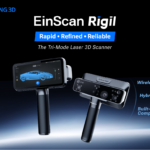Researchers at Lancaster University and the Dovetailed group are testing the effects of various foods on human recollection. More specifically, they aim to test the link between sweet or bitter tastes and their corresponding memories. However, to do this, they required a means of isolating tastes and odors within each food sample. That’s where 3D printing comes in, allowing the researchers to develop specific treats that met the control requirements of the food and memory study.
“Taste can be a powerful tool to express and communicate experiences,” said Tom Gayler, of Lancaster University and lead researcher of the study. “Although lab-based studies have looked at the relationships between basic tastes and emotions, until now we have known very little about how this extends to real-life scenarios.”
While most studies tested these factors in abstract ways, usually related to mood, this study tested for positive and negative experiences. As a result, they were able to confirm the common suspicion that sweet tastes correlate to positive experiences. Conversely, they were also able to find a correlation between bitter tastes and negative experiences.
Food Printing & Taste Tests
Testing the links between food and memory recollection is not a new idea. However, the difference in this approach is the level of control the researchers exercised. They were also able to create original foods that avoid triggering pre-existing associations outside of taste and odor. This is all thanks to their use of the nufood printer, providing for a much neater experiment design.
“We wanted to find out more about which tastes are associated with which emotions, to discover if our sense of taste can be used to develop new experiences, and we also wanted to explore how some of these experiences, such as finding out how your favourite team did in the big match, might work,” said Gayler.
The researchers take their conclusions further, noting how food printing could be a memory retrieval means. They “envisage 3D food printers located within the home and connected to a smartphone“, creating foods that trigger memories as stimuli in much the same way we use old photos. The concept is an interesting one.
It could also be useful in bringing aiding recollections in patients with memory issues. Food printing has, after all, previously seen use in old folks homes and medical situations. There are many avenues for future research.
Featured image courtesy of University of Lancaster, retrieved via original study (available here).










